Let's say you've identified onboarding as an opportunity for more user retention and engagement. You embark on a product to improve your onboarding, excited about the flood of paying users you'll unleash. After weeks of meticulous research, you've even catalogued specific onboarding experiences you want to build.
Now comes the hard part: How do you get it done?
Unless you're lucky enough to have a dedicated growth engineer, onboarding often languishes in the backlog for years. Design and engineering are busy enough building new features with design, leaving you to wait until the day people aren't swamped anymore and you finally tackle the backlog (a day never comes).
Luckily, you don't have to build everything from scratch: There are a lot of user onboarding tools you can use with minimal technical implementation.
Today, we’re going to delve into five stellar customer onboarding tools that help you turn more new sign-ups into long-term paying customers.
Before we get to the tools, let's start with a couple of basics.
The principles of onboarding
The first thing to realize about customer onboarding is that you cannot just copy and paste a strategy of another app. Not only is the other app likely still tinkering with their onboarding process, but other SaaS apps have different (a) users, (b) buyers, (c) points of friction, (d) sales cycles/pricing models, and (e) end states.
For instance, imagine Suzy, who runs a security enablement product with a 6-month sales cycle. She likely wants onboarding to be form-fitted around the goals that the customer expressed during the sales cycle. Contrarily, imagine Mark who runs a productivity tool. His product isn’t gated—allowing open sign-ups. He wants onboarding to first focus on educating customers on the product.
Different goals mean different tools. Your takeaway from this list shouldn’t be to implement all of these but to pick and choose tools that fit your onboarding goals.
Key Takeaways
- Customization is Key: Recognize that onboarding strategies cannot be one-size-fits-all. Different SaaS products have unique users, buyers, points of friction, sales cycles, pricing models, and desired end states, all demanding tailored onboarding approaches.
- What is Customer Onboarding?: It's the process of helping new users understand, navigate, and effectively use your product, while correcting misconceptions and encouraging continued engagement.
- Importance of Customer Onboarding: First impressions matter immensely in SaaS. A well-crafted onboarding experience can significantly impact user adoption and reduce churn.
- Common Onboarding Features: Tools often include modals, slide-outs, tooltips, driven actions, and analytics. Each has its own merits and challenges in guiding user behavior and gathering user experience data.
- Six Types of Onboarding Tools:
- In-App Tooltips & Tours (e.g., Command AI): Create guided user tours, checklists, etc. with modals and slide-outs.
- User Behavior Analytics (e.g., FullStory): Understand user interaction through session replay and behavior analysis. Alternatives include Posthog, Logrocket, Mixpanel, and Hotjar.
- Video Onboarding (e.g., Wistia): Embed concise, visual tutorials directly in the product. Competitors include Loom, Vimeo, and Vidyard.
- Email Onboarding (e.g., Customer.io): Engage users through email sequences that highlight features and actions. Mailchimp and Drip are notable alternatives.
- Help Desk Tooling (e.g., Zendesk): Create searchable help centers for self-service support. Alternatives include Help Scout and Intercom’s Support product.
- Search Bar Enabled Tools (e.g., Command AI): Facilitate user-driven onboarding through a command palette for feature discovery and help content access.
- Balanced Approach with Command AI: Command AI supports a balanced approach to onboarding, blending user-initiated discovery with guided experiences. Spotlight pairs well with our nudges for a comprehensive onboarding strategy, accommodating both passive and active user engagement.
- Conclusion: Selecting the right mix of onboarding tools is crucial. Align them with your product's unique requirements and user preferences to craft an effective and engaging customer onboarding experience.
What is customer onboarding?
Customer onboarding, not to be confused with employee onboarding, is the process of engaging and acquainting users with your product. While your users may have some idea of what your product does, they will still have to:
- Learn how it works and how to navigate it
- Correct any misconceptions they have about your features
- Be convinced to return and engage with your product
Why is customer onboarding important?
You’ve probably heard the term first impressions matter. This couldn’t be more true when it comes to SaaS products; your customer onboarding experience will greatly impact the likelihood of a user understanding the value of your product and adopting it rather than churning.
Customer onboarding is rarely a challenge you want to tackle alone. Thousands of SaaS platforms have been created, and few of these teams build everything involved with their customer onboarding process fully in-house.
Common Features
Before we go through different types of customer onboarding tools, it is worth discussing common features. After all, plenty of customer onboarding tools overlap, and sometimes the ideal software stack means permitting some overlap as long as your core needs are met.
Common features include.
- Modals. Modals are pop-up widgets that typically interrupt the user’s behavior to course-correct them towards an ideal action. Modals are a great way to ensure users see onboarding information, but they can also become annoying and create UX friction ahead of using a product.
- Slide-outs. Slide-outs are similar to modals, but they have a smaller, more discreet form factor that doesn’t strictly interrupt the user’s behavior. A slide-out is similar to an app notification, though it usually is initialized near the app’s lower left or right corner.
- Tooltips. Tooltips are more passive than Modals and Slide-outs, typically expecting the user to hover over an italicized i to learn more about a feature. Unlike Modals or Slide-outs, multiple Tooltip anchors can be visible at the same time without distracting the user—however, Tooltip anchors may go unnoticed by more casual users.
- Driven Actions. Driven Actions are less of a UI widget and more of a design pattern. If you want a user to be aware of a “Submit” button or Input field, you can expressively highlight and focus the field so that the user is aware of them. Driven Actions usually differ from an app’s typical choose-your-own-adventure layout and tend to be deployed during your first visit to a feature.
- Analytics. Onboarding widgets are only half of the battle; understanding if onboarding widgets are working and what parts of your product are struggling is paramount to building a good user onboarding system. Customer onboarding tools typically will include analytics features to analyze these critical user paths.
Here are six types of customer onboarding tools.
1. In-App Tooltips & Tours—Command AI nudges
Nudges are our in-app notifications: Little notifications with varied use cases. To focus on onboarding, the most obvious use cases are product tours and onboarding checklists.
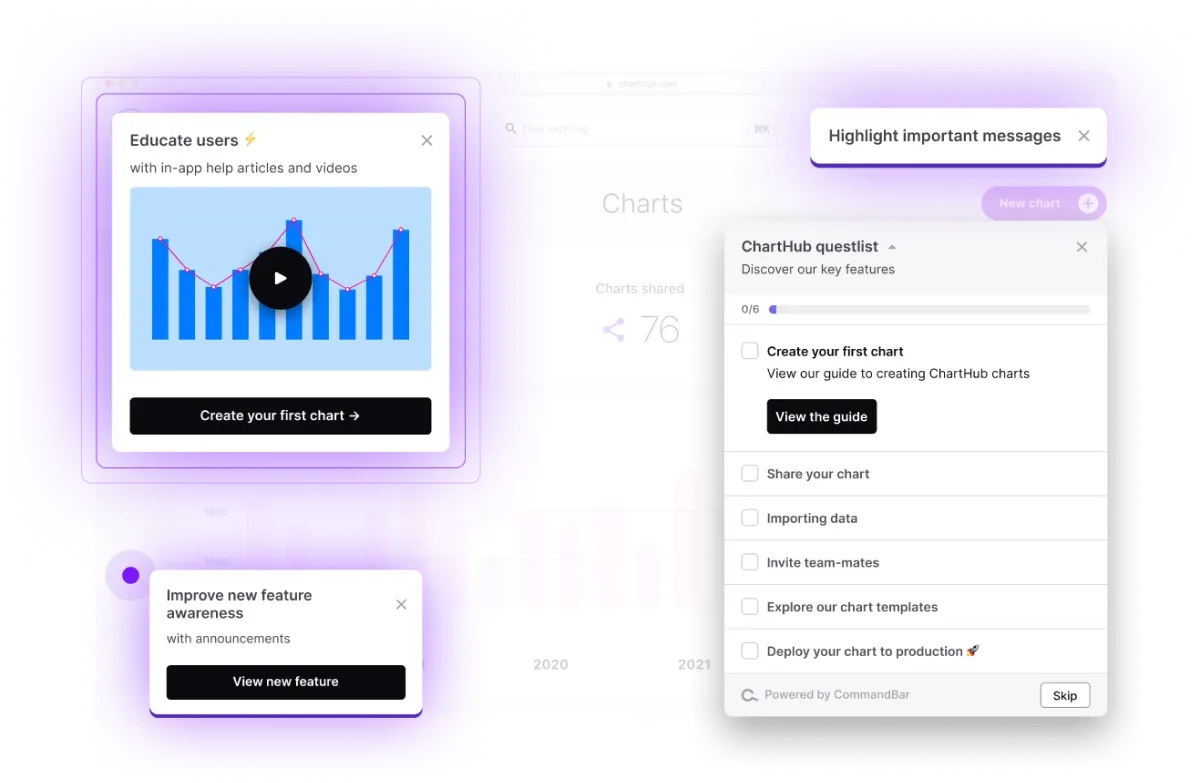
One of the shortcomings of In-App Tooltips & Tours is users feeling infantilized. It’s believed that over 50% of users skip onboarding tours altogether—not because they don’t need assistance, but because they’ve built the muscle memory to skip tours they typically find unhelpful.
Additionally, Modals can frustrate users and create extra product friction. However, one strategy to minimize negative reactions to onboarding UI is to give users a choice—take the tour or learn the product self-serve. A number of Command AI customers utilize this philosophy; either, users go through a tour-like experience, or they utilize Command AI Spotlight to search for features or help on-demand.
2. User Behavior Analytics—FullStory
FullStory, the leader in session replay, enables teams to watch user sessions akin to a screen recording. FullStory, which minimally impacts your product’s performance, can help you determine if onboarding strategies are working and what hidden, tucked-away features may need more bespoke hand-holding.
Competitors to Fullstory include Posthog, Logrocket, Mixpanel and Hotjar. FullStory is most likely going to end up being the most expensive solution for most SMBs. Posthog is notably open-source (and free-tier friendly) and, alongside Mixpanel and Hotjar, has wider analytics features. Logrocket meanwhile shares territory with developer tools to catch live errors and may be ideal for dev-focused companies.
However FullStory, in particular, pioneered rage-clicking detection. With rage-clicking detection, you locate places in your product where your user expressed frustration—either due to a bug or the product not behaving how they expected it to behave.
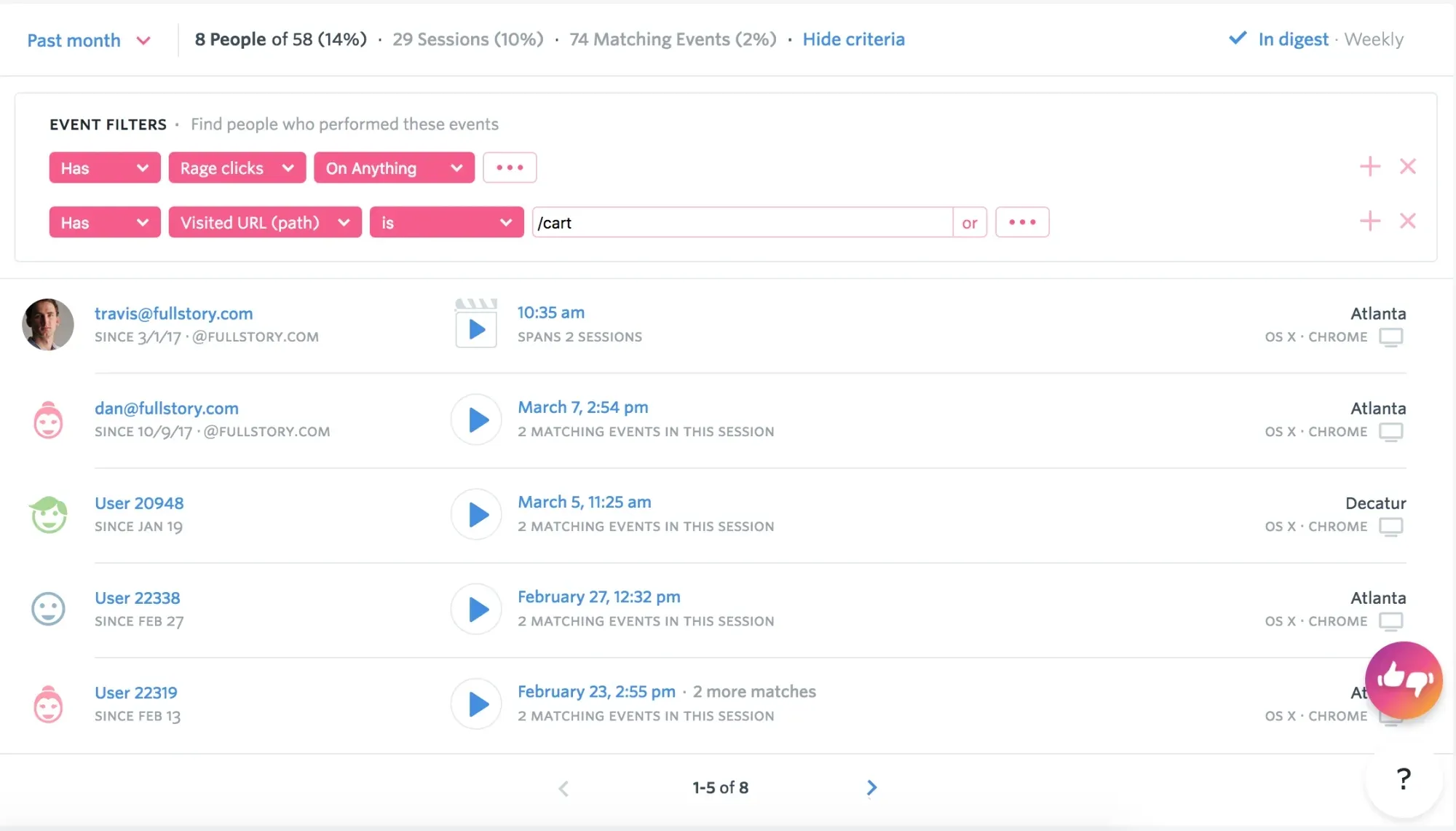
One downside of products like FullStory is they may over-promise insights. Technically, having a log of every user experience is incredibly valuable; however, teams often don’t have the time to review user interactions. As a result, it’s important to define Feature Adoption Funnels and Product Adoption Funnels to filter for the important session to scrutinize.
3. Video Onboarding—Wistia
Wistia is a leader in video onboarding platforms. These are tools designed to enable you to embed short and visual tutorials in your product to show-and-tell users towards product success. Video onboarding is an exceptional choice if your product generally needs a person to walk through your users, but you cannot justify a person for every user synchronously.
Wistia will enable you to embed videos in your product and track if those videos are seeing engagement from users.
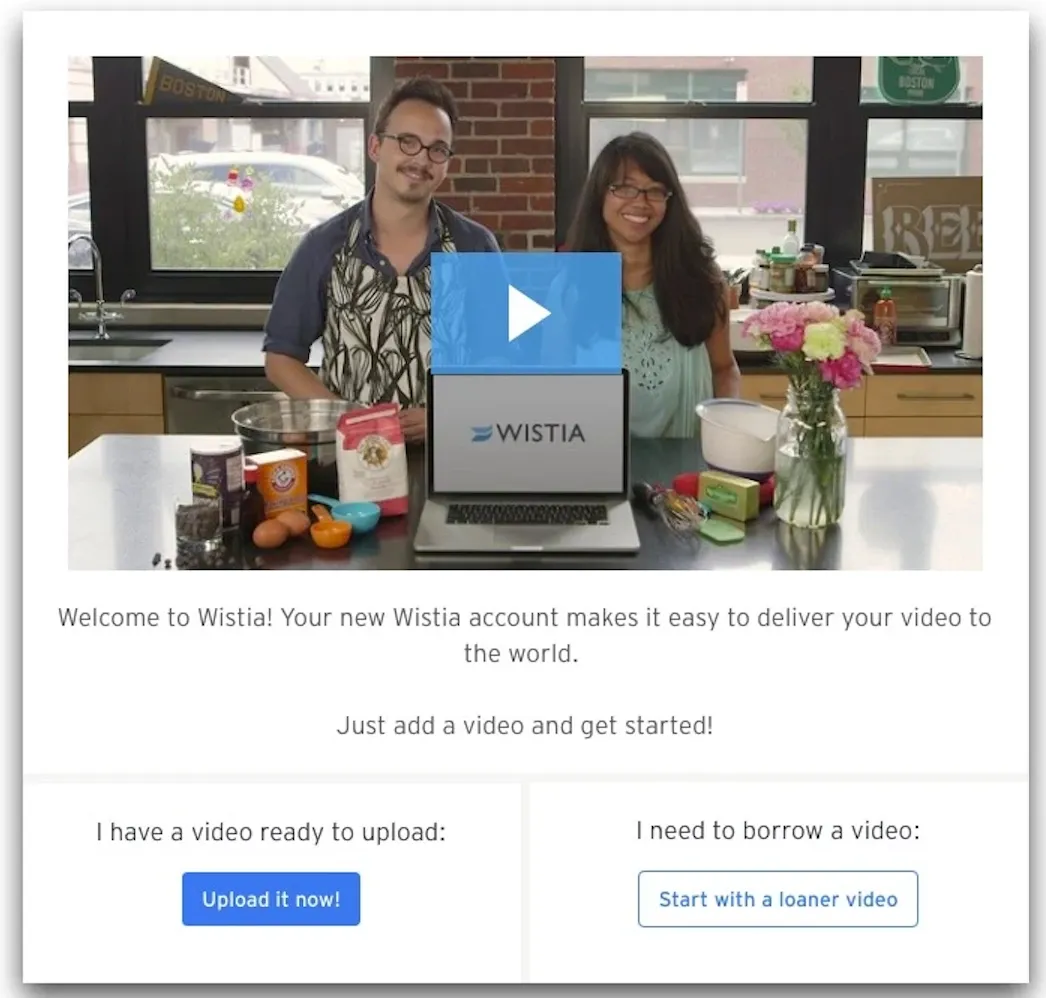
Competitors to Wistia include Loom, Vimeo, and Vidyard. Loom is a more general-purpose tool with a built-in Desktop and Browser app to make recording videos easy. Vidyard tends to be more popular from a sales angle, and Vimeo is fantastic if video UHD quality matters.
One downside of video onboarding is that they technically take more time than textual search. Some users will be turned off by video onboarding modals and skip around the video or dismiss the modal altogether. A way to mitigate this is to break video onboarding into focused, shorter videos by topic feature.
Breaking up a catalog of existing content can be very time-consuming though. One strategy that has seen success among Command AI customers is letting users search through video transcripts and allowing them to start watching at the timestamp that matches their search. Kind of like how Google will show you the “relevant clip” of a YouTube video in response to a search.
4. Email Onboarding—Customer.io
Customer.io is a leader in user engagement over email. Commonly conflated with cold-email sales tools like Outreach or Salesloft, Customer.io is laser-focused on engaging your existing users with email sequences that story-tell about features and actions they can take in your tool.
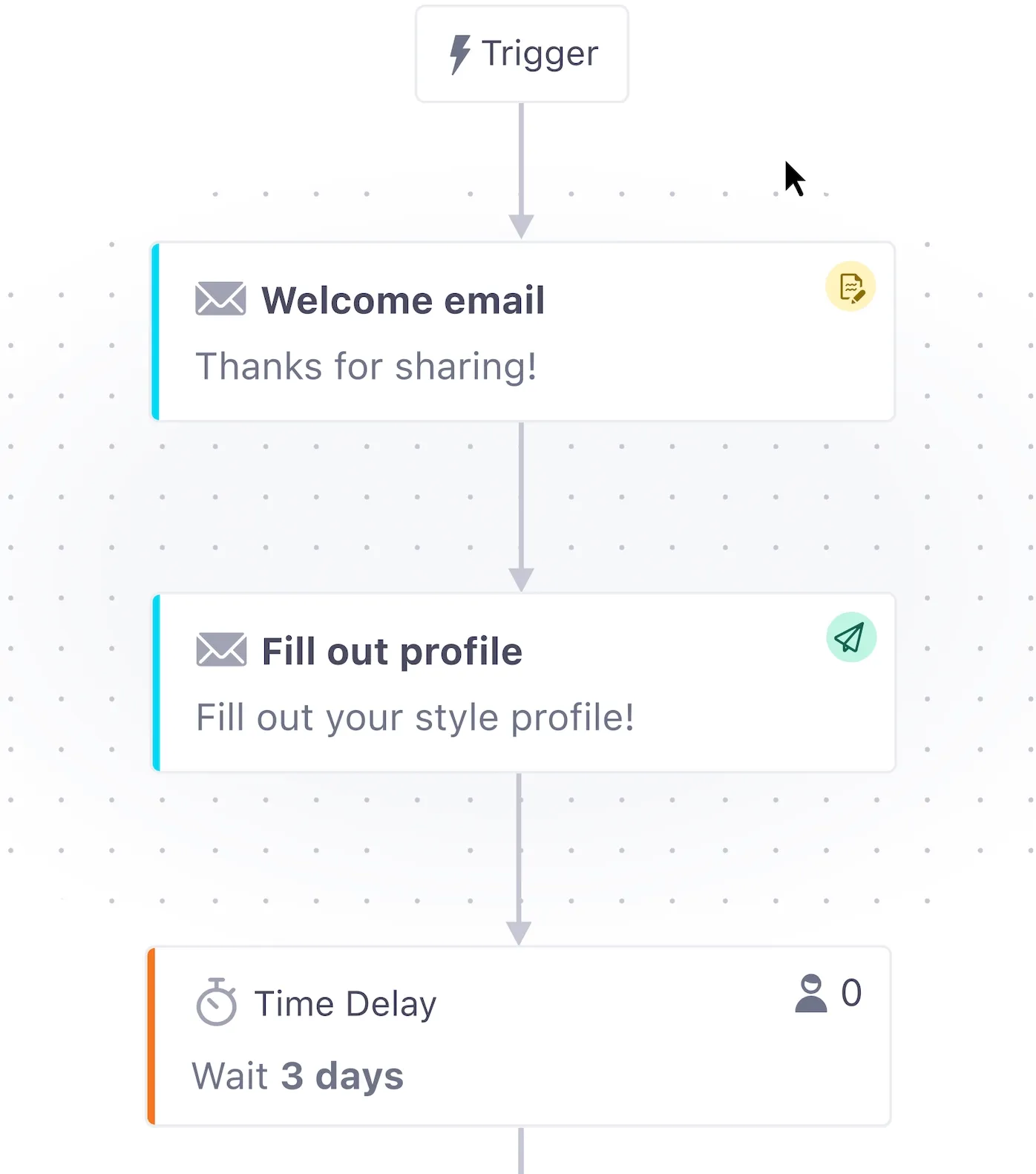
Competitors to Customer.io include Mailchimp and Drip. Mailchimp is an older brand that is focused on designer emails with heavy visuals and styling than short and note-like reminders. Drip, meanwhile, has mostly had success in e-commerce, plugging into platforms like Shopify.
Practically speaking, tools like Customer.io enable you to remind your users of your product by nudging them to return in each email. However, a problem with products like Customer.io is that they can annoy users that don’t believe the emailed content is genuinely useful. Some users are conditioned to ignore product engagement emails altogether because they’ve had poor experiences with them.
5. Help Desk Tooling—Zendesk
Zendesk is the leader in Help Desk tooling. Help Desk platforms help you create a Help Center which is a searchable place to answer user questions. Help Desk tooling is necessary for self-serve products because users will have questions even if the answer might seem plainly obvious to the team building the product. That’s more or less a law of building software in general—never overestimate your user’s ability to achieve the obvious.
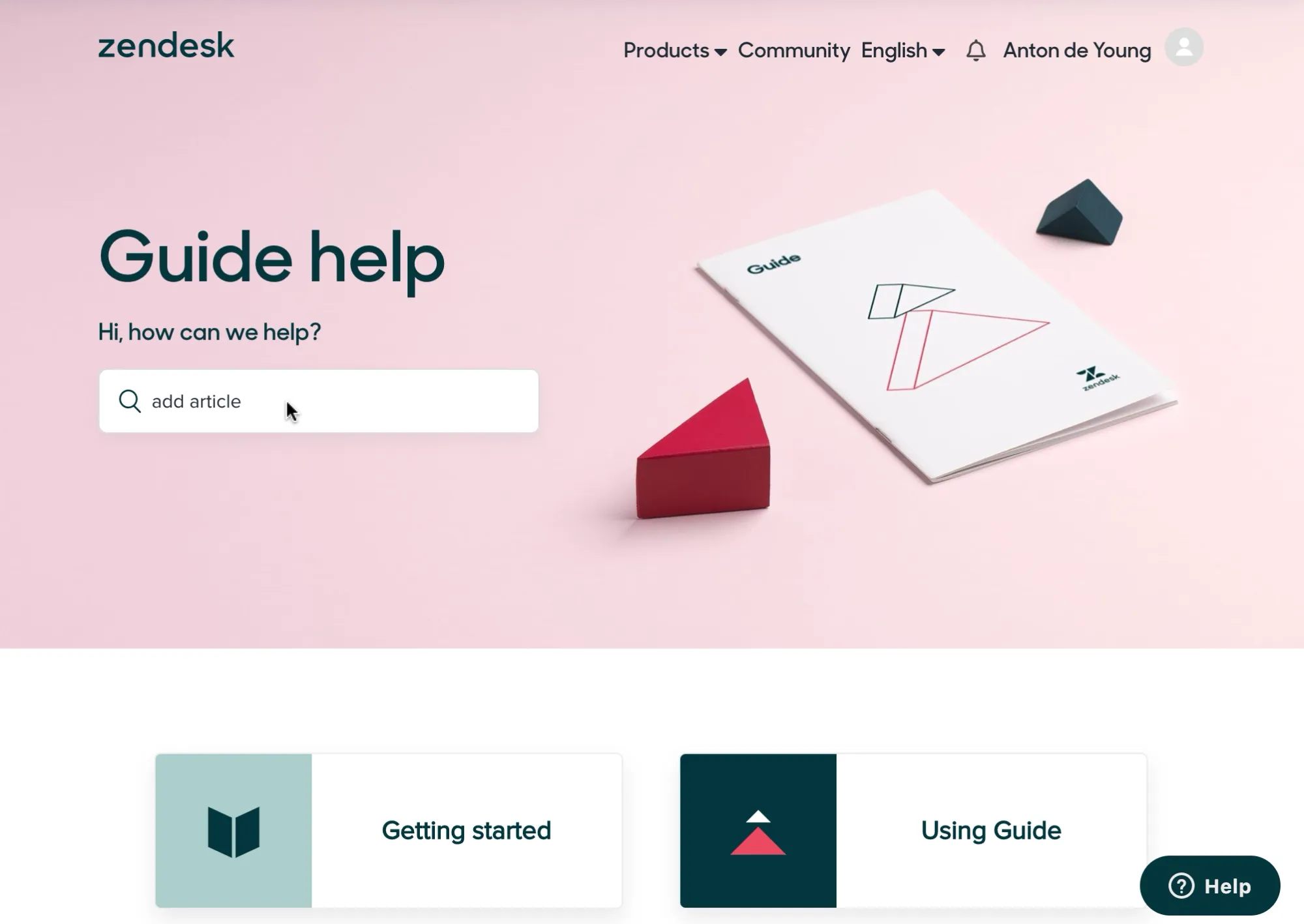
Competitors to Zendesk include Help Scout and Intercom’s Support product. Zendesk is an enormous product and is great for companies that want to grow into their product suite. For businesses that just want help desk tooling, Help Scout’s pricing and focus may be a better match. Alternatively, if you use Intercom’s Engage product, Intercom’s Support product may be ideal.
One of the shortcomings of Help Desk software is that your product’s vocabulary may differ from the user’s. For instance, a user may be looking to learn how to archive a product; however, if your product refers to archiving as soft deleting, they may never locate the article. This is why Command AI built a synonym-match feature to enable searching Zendesk and other help suites.

6. Search Bar Enabled Tools—Command AI Spotlight
One of the fundamental issues plaguing customer onboarding software is the risk of annoying or infantilizing the user. Users don’t typically like being told what to do. Our Spotlight product fixes that by making onboarding user-driven. Users type queries or terms into the widget, a command palette, which naturally surfaces features that may be relevant to them. We call this user pull.
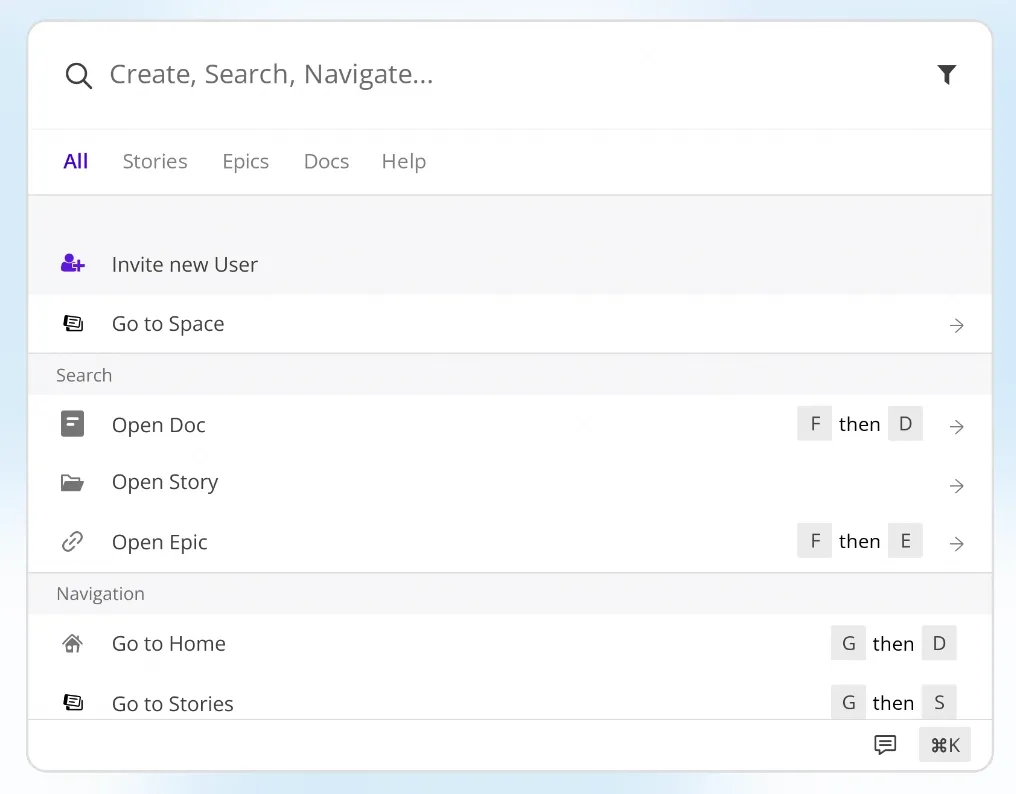
Command AI’s immediate benefits include:
- Exposing actions in a familiar, simple UI
- Making actions live next to help content; this dramatically expedites results
- Accounting for users’ preferred synonyms for a certain action
Command AI believes in a balanced pull and push approach. We want to encourage users to search for things, thus pulling them into onboarding as opposed to forcing them in certain directions. Pairing Spotlight with a nudge-based tours is a powerful combo — users can trigger Command AI product tours flows from Spotlight themselves, and your product can still trigger nudges automatically in situations where you feel the invasiveness is warranted. Command AI also has a lightweight nudges feature that lets you push actions and help content.
Conclusion
Customer onboarding tools are an integral part of building a strong customer onboarding strategy. With the correct goals in mind, you can build a strong stack for encouraging customers towards happy paths and ideal levels of engagement. Every business has different users, with different user intent, and you want to create the customer onboarding strategy that works best for your user’s needs.

















